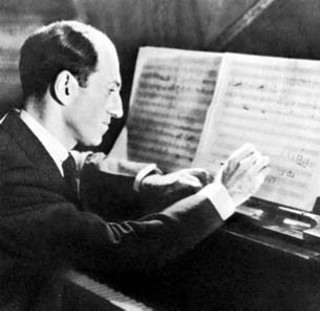George Gershwin: From the Alley to the Concert Hall
A brief look at the life of the composer of Porgy and Bess
By Graham Reynolds, Fri., Jan. 25, 2008

One of the most significant musical phenomena of the 20th century was the blurring of what had been the relatively distinct lines between popular culture and "high art." Owing in large part to the invention and spread of recording and duplication technologies, as well as the relative universality of public education, musical literacy and expertise was no longer the exclusive domain of a tiny wealthy elite. In the West, the sophistication of jazz had already started to confuse those lines, but the institutions of classical music still fell relatively secure in their exclusivity. Then in 1924 came Gershwin's Rhapsody in Blue, and the invasion had begun in earnest. Gershwin was a Tin Pan Alley composer who wrote pop songs and didn't even have the background to orchestrate his own score. (This was done by another composer, Ferde Grofé.) Nonetheless, here Gershwin was, writing music for the concert hall and breaking the superficial physical barriers right along with the more substantial and subtle musical ones. By the time of his Concerto in F, Gershwin's skill set had evolved, and he orchestrated his own material from there on out. Porgy and Bess took this branch of his career to its grandest point.
Born in Brooklyn in 1898, Gershwin started his career on "the Alley" plugging other people's songs. But he quickly moved up the ladder, composing his own songs, then Broadway hits, Hollywood hits, and, of course, orchestral concert pieces, which led him to become the most powerful, recognized, imitated, and sought-after songwriter in the era of the Great American Song. Just a few of the standards he contributed to the repertoire include "I Got Rhythm," "Let's Call the Whole Thing Off," "'S Wonderful," "Summertime," "Somebody Loves Me," "Swanee," "Someone to Watch Over Me," "I Got Plenty o' Nuthin'," and "A Foggy Day." His most frequent lyrical partner was his brother Ira, but he collaborated with others throughout his career.
As with so many musical greats, Gershwin's career was cut tragically short. In 1937, the composer succumbed to either overwork, brain cancer, medical negligence, or some combination of the three (reports vary). But whatever the cause, he was gone. The July 19, 1937, issue of Time magazine reported, "Serious musicians joined pluggers and crooners to mourn the 38-year-old composer who had made the world sing his songs and who never, even in his most pretentious work, disdained the antic, impertinent data he had picked up in Tin Pan Alley." The world had lost a musical bridge-maker whose bridges are still in use today.









